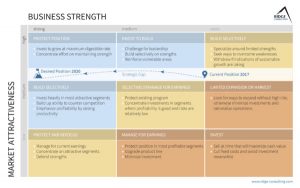Managers become extremely frustrated when they have a team of competent field representatives, but lackluster sales and customer satisfaction levels. One explanation for these problems is ineffective or nonexistent territory management. If clients are not properly grouped or if field reps are not properly dispersed amongst clients, customer relationships and the bottom line can suffer. However, with careful planning and consistent analysis, territory management can optimize a field team’s efforts.
Territories can be defined as groups of customers or geographic districts that are assigned to a field rep or group of field reps. They may be separated based on the prioritization of clients, time spent at various clients, travel time between client visits, or a number of other factors. The main purpose of having territories is to balance a field team’s workload and maximize the sales potential within each territory. It is important to outline goals that your organization hopes to reach with each individual client in order to decide how much time should be devoted to each one; this will play a part in the territory creation process. Conduct preliminary research to determine achievable but challenging objectives for each territory your organization establishes. Having realistic goals to work towards will keep employee engagement levels high and lead to a boost in productivity.
High-performing sales reps should be assigned to high-priority clients. Similarly, it is more important that territories be divided based on their potential revenue, not on their arbitrary location. For example, one particular geographic region may hold five clients while another holds ten. Assuming that travel time between clients is similar in both regions, a territory system based solely on geographic location is horribly inefficient. How can one rep be expected to visit ten clients in a day if another is only visiting five? Field reps should have some say in the territory creation process, as it directly affects their work. Moreover, including them in organizational decision-making is good for morale. Something to keep in mind is that territories are dynamic. They should be updated annually and adjusted as needed in order to maximize profitability.
With an effective territory management system in place, managers can create efficient schedules and travel routes for reps within each territory instead of leaving them to their own devices. Poor use of travel time can lead reps to be late to appointments with clients or miss them altogether. Good territory management also prevents overlap of reps’ work, which can lead to arguments over whose client is whose. Not only is overlap unproductive, it can annoy clients and strain relationships with them.
Territory management allows managers to more easily monitor field reps’ activities because they are aware of exactly where field reps are operating. Problems in the field can be directly traced to a particular rep or group of reps and therefore dealt with more quickly. It also lets managers see trends as they develop across territories and devise strategies in reaction to those trends. If an organization is able to better manage relationships with clients and has clear visibility over field operations, it will stay ahead of the competition. After territory creation, bumps in the road will be inevitable. However, organizational leaders should approach these issues as learning opportunities to further refine territories and improve efficiency.
Overall, effective territory management saves organizations time and money, ensures a balanced workload for field reps, and strengthens relationships with clients. All of these improvements will lead to a positive effect on the bottom line. For more information about how to define and manage territories, download this Best Practice Guide to Setting Up Sales Territories.
Business & Finance Articles on Business 2 Community
(142)








